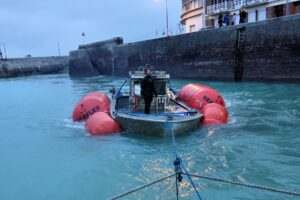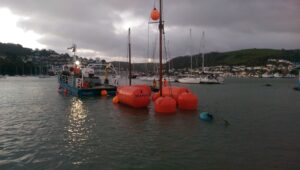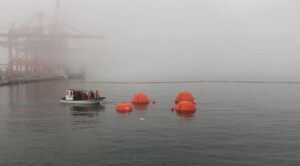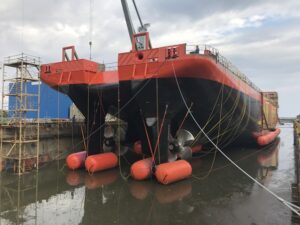Marine salvage operations play a crucial role in recovering and rescuing vessels, cargo, or other objects from the depths of the ocean. These missions are challenging and often require specialized equipment to ensure a successful outcome. One such essential tool that has revolutionized marine salvage is our buoyancy bags. In this article, we will explore how these inflatable bags available on the market are designed to provide buoyant support, facilitating the lifting and refloating of submerged objects.
Understanding Buoyancy Bags
Buoyancy bags, also known as salvage bags, are inflatable devices designed to create buoyant force underwater. They come in various shapes and sizes to cater to different salvage scenarios. The bags are made from durable and flexible materials, allowing them to withstand underwater pressure and potential rough handling during salvage operations.
Key Features and Design
Buoyancy bags are equipped with several features to enhance their functionality during marine salvage. Some common features include:
- High Lift Capacity: Buoyancy bags can provide significant uplift, enabling the salvage team to raise heavy objects such as shipwrecks, sunken cargo, or equipment.
- Attachment Points: The bags are equipped with strong and strategically placed attachment points to secure them to the sunken object or debris effectively.
- Rapid Inflation and Deflation: Buoyancy bags are designed for quick inflation and deflation, allowing salvage teams to adjust the buoyancy as needed during the operation.
- Multiple Sizes: Available in various sizes, these bags offer versatility to match different salvage scenarios.
How Buoyancy Bags Facilitate Marine Salvage Operations
- Lifting Sunken Objects: One of the primary uses of buoyancy bags is to lift sunken objects like vessels or equipment to the water’s surface. By attaching the bags to the object and inflating them, the bags create upward force, causing the object to ascend.
- Refloating Grounded Vessels: When a vessel runs aground, buoyancy bags can be strategically positioned beneath it. Upon inflation, the bags provide enough lift to refloat the vessel and guide it back to deeper waters.
- Managing Underwater Buoyancy: During complex salvage operations, it’s crucial to control the buoyancy of the submerged object. Buoyancy bags can be adjusted or combined to achieve precise buoyancy control, making the recovery process more efficient and safer.
Types of Marine Salvage Operations our Seaflex Bags have assisted with
Marine salvage operations encompass a wide range of scenarios, each presenting unique challenges and requirements. Salvage experts categorize these operations into different types based on the nature of the incident and the objectives of the recovery mission. Let’s explore some common types of marine salvage operations:
Wreck Removal:
Wreck removal operations involve the extraction of shipwrecks or other large objects that have sunk or run aground. These operations can be particularly complex when dealing with historical wrecks or vessels resting in environmentally sensitive areas. Buoyancy bags play a crucial role in lifting and refloating the sunken vessel, enabling its removal from the sea floor.
Cargo Recovery:
When cargo-carrying vessels experience accidents at sea, recovering the cargo becomes a priority to minimize environmental damage and financial losses. Buoyancy bags can assist in lifting cargo containers or other valuable items from the sea floor to the surface, making recovery efforts more efficient.
Environmental Salvage:
Environmental salvage operations aim to mitigate ecological damage caused by incidents like oil spills or hazardous material leaks from sunken vessels. Buoyancy bags can be used to float containers filled with pollutants to the surface for proper disposal or containment.
Underwater Infrastructure Repair:
Salvage operations aren’t limited to recovering sunken objects. They also include repairing underwater infrastructure, such as pipelines, cables, or submerged installations. Buoyancy bags can help raise equipment or materials needed for repairs to the desired depth.
Grounded Vessel Refloating:
When a vessel runs aground in shallow waters, refloating it can be challenging. Buoyancy bags strategically placed beneath the vessel can provide the necessary uplift to free it from the grounding point and return it to deeper waters.
To summarize, buoyancy bags have significantly improved marine salvage operations by providing reliable support for lifting and refloating sunken objects. Their adaptability, high lift capacity, and quick deployment make them invaluable tools for salvage teams worldwide. With continuous advancements in technology, these buoyancy bags will undoubtedly play an even more crucial role in the future of marine salvage and underwater recovery.
By ug-admin




